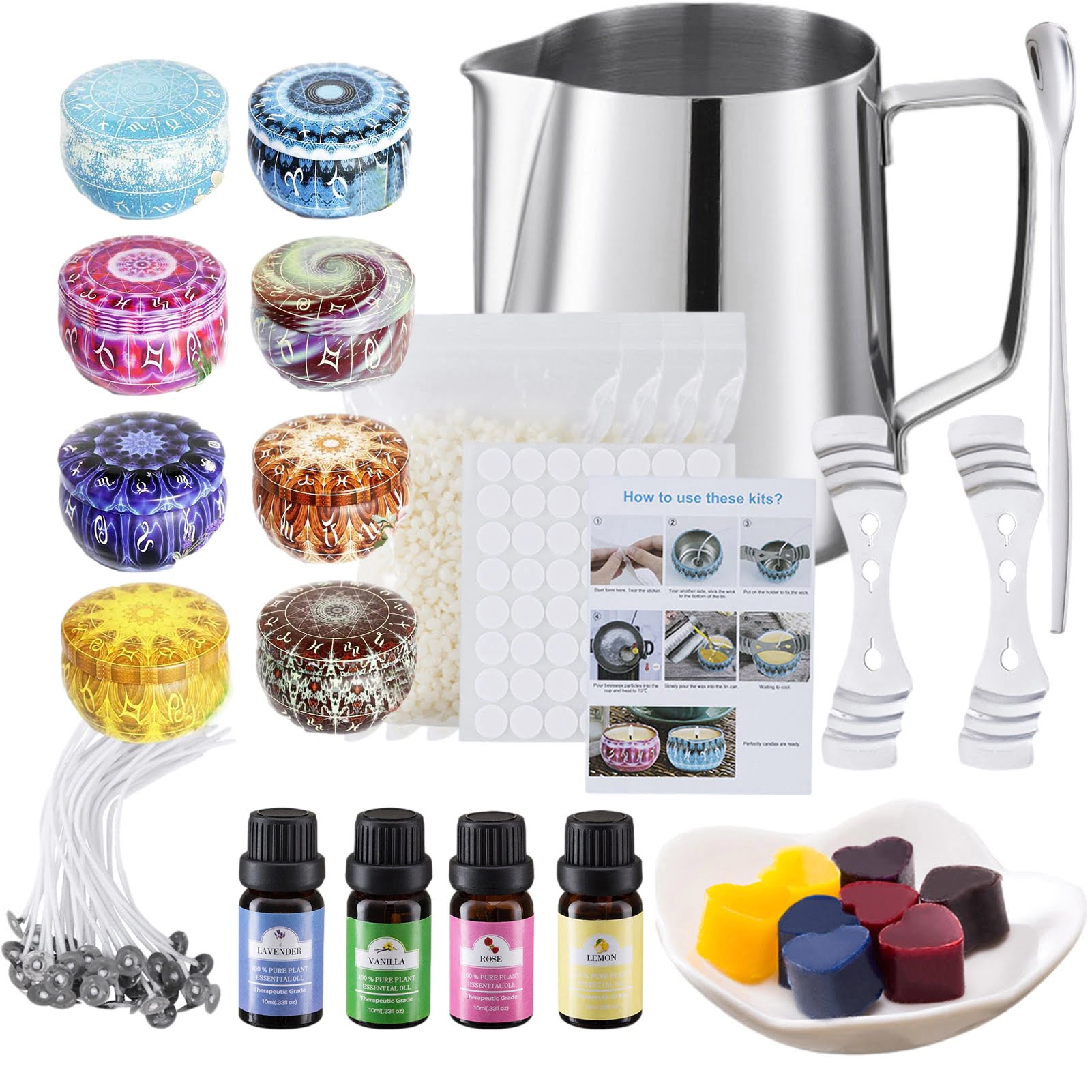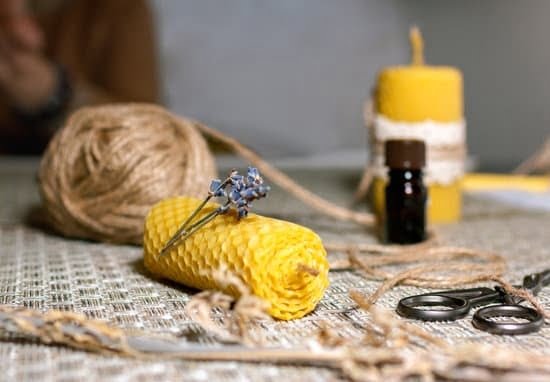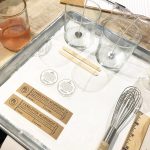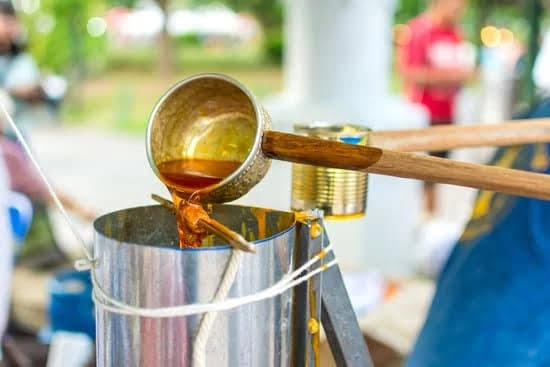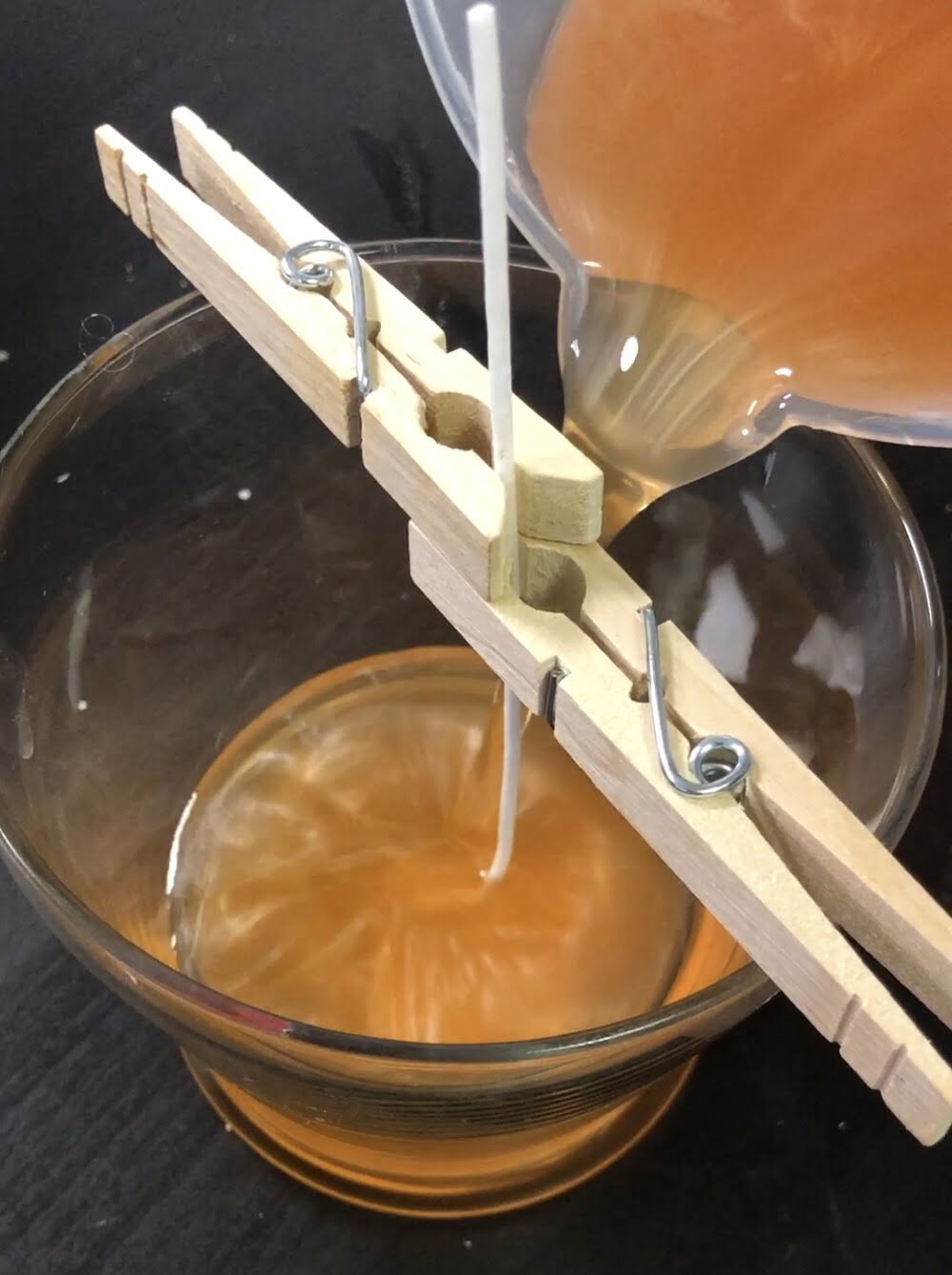Candles have been a part of human culture for centuries, providing not only practical lighting but also a sense of warmth and ambiance. In recent years, the popularity of candles has soared, with many people seeking unique and personalized options to enhance their homes or create thoughtful gifts. Handmade candles have become especially sought after, as they offer a touch of artistry and craftsmanship that mass-produced alternatives often lack.
The allure of handmade candles lies in their ability to reflect individual creativity and style. With an array of colors, scents, and designs to choose from, these candles allow individuals to create customized pieces that perfectly suit their preferences or complement their décor. Furthermore, the process of making candles can be a therapeutic and satisfying activity that provides a tangible result at the end.
This article will delve into the fascinating process of candle-making, exploring its historical origins, essential tools and materials needed, as well as the step-by-step techniques involved in creating beautiful handmade candles. Whether you are a novice looking to embark on a new hobby or an experienced candle-maker seeking inspiration and troubleshooting advice, this comprehensive guide will provide you with valuable insights and tips for making your own personalized creations.
Don’t just light up a store-bought candle – join the growing community of candle enthusiasts who take pride in crafting beautiful and unique additions to their homes.
Historical background
Candle-making dates back thousands of years and has a rich historical background. The use of candles can be traced back to ancient civilizations, where they were primarily made from natural materials such as animal fats and plant waxes. The earliest known evidence of candle-making comes from Ancient Egypt, where reeds were dipped in animal fat or beeswax to create early versions of candles.
As time progressed, various cultures and regions developed different methods and materials for making candles. In ancient Rome, candles were made from tallow (animal fat) or beeswax, often with a papyrus wick. In the Middle Ages, European candle-makers began using tallow produced from rendered fat of cows or sheep. However, these early candles had a limited burn time and emitted a strong odor when lit.
The evolution of candle-making took a significant leap forward during the 18th century with the introduction of stearin wax. Stearin wax, derived from animal fats or vegetable oils, had superior qualities compared to earlier methods and produced cleaner-burning and longer-lasting candles. This advancement paved the way for further innovations in candle production.
With the advent of the Industrial Revolution in the 19th century, traditional candle-making methods gave way to more efficient techniques and new materials such as paraffin wax. Paraffin wax is derived from petroleum refining and quickly became popular due to its affordability and ease of use. This innovation allowed candles to be mass-produced and made available to a wider population.
Today, while traditional methods are still practiced by some artisans, modern technology has opened up countless possibilities for candle-making. From soy wax to beeswax alternatives, there is now an extensive range of materials available to create candles that suit different preferences and purposes.
Overall, understanding the historical background of candle-making helps us appreciate the craft’s development throughout centuries. It also highlights how technological advancements have contributed to making candle-making accessible for individuals who want to create their own unique and personalized candles.
Tools and materials
Candle-making requires a few essential tools and materials to ensure a successful and safe process. Before embarking on this creative endeavor, it is important to gather all the necessary equipment and ingredients.
The first essential tool in candle-making is a double boiler or a melting pot. This allows for even heating of the wax without direct exposure to high temperatures. It is crucial to use a dedicated melting pot as using your regular cookware may result in wax residue that is difficult to clean off.
Next, you will need a heat source such as a stove or an electric hot plate to melt the wax. Additionally, a thermometer is necessary to monitor the temperature of the melted wax accurately. Maintaining the correct temperature plays an important role in achieving optimal results.
To mold candles, you will need containers or molds. Glass jars, metal tins, silicone molds, or traditional candle molds can be used depending on your preference for the final candle shape. When selecting containers, consider their ability to withstand high temperatures and compatibility with the type of wax being used.
In terms of materials, choosing the right wax is crucial. There are various options available including soy wax, beeswax, paraffin wax, and palm oil-based waxes. Each type has its own characteristics and benefits, so it is important to research and select one that aligns with your preferences and needs.
Other important materials include wicks of appropriate size and material for your candle project. The wick acts as the fuel delivery system for the flame and should be selected based on factors such as candle diameter, desired burn time, and type of wax used.
Furthermore, coloring agents such as liquid dyes or dye chips can be used if you want to add color to your candles. Fragrance oils or essential oils can also be added if you want scented candles.
| Tools | Materials |
|---|---|
| – Double boiler or melting pot | – Wax (e.g., soy wax, beeswax, paraffin wax) |
| – Heat source (e.g., stove, electric hot plate) | – Wicks of appropriate size and material |
| – Thermometer | – Colorants (liquid dyes, dye chips) |
| – Containers or molds | – Fragrance oils or essential oils (optional) |
With these tools and materials at hand, you are ready to begin the candle-making process. Remember to follow all safety precautions and enjoy the creative journey of making your own beautiful candles.
Preparing the wax
Preparing the wax is a crucial step in the candle-making process. The type of wax used can greatly impact the quality, scent throw, and burn time of the finished candles. There are several different types of wax that can be used, each with its own unique properties and characteristics.
One popular type of wax is paraffin wax, which is derived from petroleum. Paraffin wax is known for its excellent scent throw and smooth appearance. It is also known to have a longer burn time compared to other waxes. Another commonly used wax is soy wax, which is made from soybean oil. Soy wax is a renewable resource and considered to be more eco-friendly than paraffin wax. It has a natural creamy color and typically has a cleaner burn.
Once you have chosen the appropriate type of wax for your candles, it’s time to melt and prepare it for pouring. The melting process can be done using various methods such as a double boiler or microwave.
A double boiler involves placing a heat-resistant container filled with the desired amount of wax into a larger pot of water and heating it gently over low to medium heat until melted. Alternatively, the microwave method involves placing the wax in a microwave-safe container and heating it in short bursts until fully melted.
Before pouring the melted wax into molds or containers, it is important to ensure that any additives such as fragrance oils or colorants are thoroughly mixed in. This can be done by stirring gently with a heat-resistant utensil until everything is well combined. It’s also essential to keep an eye on the temperature of the melted wax, as pouring it while too hot or too cold can lead to issues such as uneven burning or poor scent throw.
In summary, preparing the wax for candle-making involves selecting the appropriate type of wax based on desired characteristics and preferences. Whether you choose paraffin or soy wax, melting it properly and ensuring any additives are well mixed are crucial steps to achieve high-quality candles. Taking the time to properly prepare the wax sets the foundation for creating beautiful and long-lasting handmade candles.
Choosing the wick
Choosing the right wick for your candles is a crucial step in the candle-making process. The wick is responsible for carrying the melted wax up to the flame, producing a steady and even burn. There are various wick options available, each designed for different types of candles and materials. Here, we will discuss these options and provide guidance on selecting the appropriate size and material for your homemade candles.
- Cotton wicks: Cotton wicks are the most commonly used type of wick and are suitable for most candle-making projects. They come in different sizes, ranging from small to large, depending on the diameter of your candle. When choosing a cotton wick, consider factors such as wax type, diameter of the container or mold, desired burn time, and fragrance or dye additives.
- Wooden wicks: If you’re looking to add a unique touch to your candles, wooden wicks can be an excellent choice. They create a cozy crackling sound reminiscent of a fireplace when burned. Wooden wicks work well with soy wax and other softer plant-based waxes but may not be suitable for harder paraffin or beeswax candles.
- Zinc-core wicks: Zinc-core wicks are generally used in container candles or pillars that require extra stability due to their large size. The zinc core enhances rigidity while minimizing mushrooming (carbon buildup) at the top of the flame.
When selecting a wick size, it’s important to consider the diameter of your candle and its intended burn time. Using a too-large wick can result in excessive smoking or uneven burning, while a too-small wick may lead to tunneling (uneven melting). Most suppliers provide recommendations based on these factors to guide you in choosing an appropriate size.
In addition to size considerations, you should also factor in any fragrances or colorants added to your candles. Certain fragrances or dyes may affect how the candle burns, requiring you to choose a wick that can accommodate these additives. It is recommended to conduct small test batches with different wick sizes and materials to determine the most optimal choice for your specific candle-making recipe and style.
By carefully selecting the appropriate wick size and material, you can ensure that your candles burn cleanly, evenly, and safely, adding to their appeal and longevity.
Adding fragrance and color
When it comes to candles, fragrance and color can significantly enhance the overall experience. Adding a delightful scent or vibrant hue to homemade candles can personalize them and create a unique ambiance. In this section, we will explore the methods and considerations for incorporating scents and colors into candles.
There are several ways to introduce fragrance into candles. The most common method is using fragrance oils, which are specially formulated to withstand the heat of melted wax. These oils come in a wide range of scents, from floral and fruity to woody and spicy. It is important to choose high-quality fragrance oils that are specifically designed for candle-making to ensure that the scent stays strong throughout the life of the candle.
To incorporate fragrance oils into your candles, you can add them directly to the melted wax during the pouring process. The recommended ratio is typically 1 ounce of fragrance oil per pound of wax, but it may vary depending on personal preference and the strength of the chosen scent. It is advisable to test small batches before making larger quantities to find the desired strength of fragrance.
In addition to fragrance, adding color to candles can enhance their aesthetic appeal. There are various options for coloring candles, including liquid dyes, dye chips, powder pigments, or even natural materials such as spices or herbs. When choosing a coloring method, consider how it will interact with different types of wax and whether it will affect the burn quality or scent throw.
Using liquid dyes or dye chips provides consistent results and easy customization since they come in a wide range of colors that can be mixed together. Powder pigments offer versatility in achieving vibrant hues but may require additional preparation steps such as mixing with a liquid medium before adding them to the melted wax.
Overall, incorporating fragrances and colors into homemade candles offers endless possibilities for creativity. Whether one’s goal is creating a relaxing environment with lavender-scented candles or a festive atmosphere with brightly colored ones, experimenting with different scents and hues can add a personal touch to each candle-making endeavor.
| Method | Description |
|---|---|
| Fragrance oils | Specially formulated oils designed for candle-making that can be added directly to the melted wax during the pouring process. |
| Liquid dyes | Colorants in liquid form that provide consistent results and easy customization as they come in a wide range of colors. |
| Dye chips | Incorporate these small blocks of concentrated dye into the melted wax, allowing for easy mixing and experimentation. |
| Powder pigments | Versatile coloring option that offers vibrant hues, but may require additional preparation steps such as mixing with a liquid medium. |
Pouring and setting
Choosing the Mold or Container
Once the wax has been melted and prepared, the next step in the candle-making process is pouring it into a suitable mold or container. The choice of mold or container will depend on the desired shape and size of the finished candle. There are various options available, including silicone molds, glass jars, metal tins, and even unconventional containers such as teacups or seashells.
When selecting a mold or container, it’s important to consider both practicality and aesthetic appeal. Silicone molds are popular due to their flexibility and ease of release when the candle has set. Glass jars are often preferred for container candles as they allow for a beautiful display of the wax and provide a safe vessel for burning. Metal tins can be a great option for travel candles or outdoor use due to their sturdiness.
The Pouring Process
Before pouring the melted wax into the chosen mold or container, it’s essential to prepare a stable surface that can withstand any potential spills or drips. Many candle makers use a heat-resistant mat or aluminum foil-covered area on which to work.
To avoid any mishaps, it can be helpful to transfer the melted wax from its original pot into a pour-friendly container, such as a heat-resistant pitcher or measuring cup with a spout. This allows for better control during pouring and minimizes messes.
While it may be tempting to pour all of the melted wax in one go, it is often advised to do so in layers if creating multicolored candles or using embeds. This technique helps ensure that each layer adheres properly before adding another.
Allowing the Wax to Solidify
After pouring the melted wax into the mold or container, patience is required as you wait for it to cool and solidify completely. The time needed will depend on several factors like ambient temperature, type of wax used, and the size of the candle. As a general rule, it is best to allow at least 24 hours for the candle to set before attempting to remove it from the mold or container.
During this waiting period, it’s important to keep the candle undisturbed in a cool and dry area. Avoid moving or jostling it as this can interfere with the solidification process and result in an uneven finish.
It’s worth noting that certain waxes may have a tendency to create sinkholes or air pockets as they cool. In such cases, carefully reheating the top layer of wax with a heat gun or hairdryer can help smooth out any imperfections and ensure a visually appealing final product.
Overall, the pouring and setting stage represents an exciting phase in candle-making, as you watch your creation come to life. With proper care and attention to detail during this step, you’ll be rewarded with beautifully formed candles ready for their finishing touches.
Finishing touches
Trimming the Wick
Once your candle has completely set and cooled, it is important to trim the wick before lighting it. Trimming the wick helps to ensure a clean and even burn, as well as prevent excessive smoke and soot. To trim the wick, you will need a pair of scissors or a wick trimmer. Carefully remove any excess burnt wick, making sure to leave approximately 1/4 inch of unburned wick remaining.
Labeling the Candle
Labeling your homemade candle can add a personal touch and make it more professional-looking if you plan on gifting or selling them. You can create custom labels using printable label sheets or purchase pre-made labels from craft stores.
When designing your labels, consider including important details such as the name of the fragrance used, any added colors, and your own branding information. Ensure that the label adheres securely to your container or jar to avoid it coming off during use.
Adding Decorative Elements
To add that extra special touch to your candles, you can incorporate decorative elements into their design. This could be anything from tying a ribbon around the jar or container, attaching small charms or beads with thin wire, or even sprinkling glitter on top for a sparkly effect.
Be creative and experiment with different ideas to find what suits your style and theme best. It is important to note that when adding decorative elements, make sure they are non-flammable substances that won’t pose any safety hazards when the candle is lit.
By following these steps for finishing touches, you can elevate your homemade candles to another level of beauty and professionalism. Trimming the wicks ensures optimal burning performance while labeling adds an element of personalization and information. Adding decorative elements allows you to showcase your creativity and make each candle a unique piece of art.
Remember that each step in the candle-making process is important and contributes to the final product. Taking the time to carefully trim wicks, create labels, and add decorative elements demonstrates your dedication and passion for creating high-quality candles. The finishing touches truly complete the candle-making process, giving you a sense of fulfillment and pride in your handmade creations.
Safety precautions
Working in a well-ventilated area
When making candles at home, it is crucial to work in a well-ventilated area. This is because the process involves melting wax, which can release fumes that may be harmful if inhaled in large quantities. Open windows or use fans to ensure proper ventilation and avoid any health risks.
Using protective gear
To ensure personal safety, it is important to use protective gear when making candles. This includes wearing heat-resistant gloves to protect your hands from hot wax and potential burns. Additionally, wearing an apron or old clothing that covers your skin can prevent any wax spills from ruining your clothes.
Handling hot wax carefully
Dealing with hot melted wax requires caution and attention to minimize the risk of accidents. Always use heat-resistant containers for melting wax and pour it slowly to avoid splashing. It is also recommended to invest in a thermometer specially designed for candle-making to ensure that the wax is at the correct temperature.
Keeping flammable materials away
As candles involve an open flame once they are lit, it is important to keep all flammable materials away from your workspace during the candle-making process. Ensure that there are no loose fabrics or papers nearby that could easily catch fire if accidentally exposed to the flame.
Supervising throughout the process
It is crucial to supervise the candle-making process from start to finish, especially when working with potentially hazardous materials such as hot wax and open flames. Never leave melting wax unattended, as it could easily lead to accidental spills or fires.
By implementing these safety precautions, you can enjoy a worry-free candle-making experience while protecting yourself and preventing any accidents or injuries. Remember, prioritizing safety ensures a positive and enjoyable experience while creating your own homemade candles.
Troubleshooting common issues
During the candle-making process, there are several common issues that may arise. Understanding these issues and how to address them can help ensure a successful candle-making experience.
One common problem is uneven burning. This occurs when a candle burns down in a way that creates a hole in the middle, leaving excess wax on the sides of the container or mold. To prevent this, it is important to choose the appropriate wick size for your candle.
If the wick is too small, it may not create a large enough flame to melt the wax evenly. On the other hand, if the wick is too large, it may produce too much heat and cause excess melting. Additionally, trimming the wick to the recommended length before each use can also help promote even burning.
Another issue that can arise is excessive smoke or soot production while burning a candle. This can be caused by several factors including using a wick that is too large or long, using low-quality wax or fragrance oils, or improper burning techniques. To reduce smoke and soot, ensure that you are using high-quality materials and following proper burning instructions. Additionally, choosing fragrance oils specifically designed for candle-making can help minimize smoke production.
A third common issue is tunneling, which occurs when a candle burns down leaving a thin ring of wax around the edges while leaving an untouched core in the center. This can be prevented by ensuring that your wick is centered properly in your container or mold before pouring in the wax.
It is also important to burn candles for an appropriate amount of time during each use; allowing them to burn long enough for the melted wax pool to reach the edges will help prevent tunneling.
By addressing these common issues and taking appropriate measures to prevent them, you can enhance your candle-making skills and create beautiful candles with consistent results.
| Common Issue | Solution |
|---|---|
| Uneven burning | Choose appropriate wick size and trim wick before each use |
| Excessive smoke/soot production | Use high-quality materials, follow proper burning instructions, and choose fragrance oils specifically designed for candle-making |
| Tunneling | Ensure proper wick placement and allow the melted wax pool to reach the edges during each burn |
Conclusion
In conclusion, the process of making candles is a rewarding and fulfilling experience. Throughout this article, we have explored the historical background of candle-making and how it has evolved over time. We have also discussed the essential tools and materials needed for candle-making, as well as the steps involved in preparing the wax, choosing the wick, adding fragrance and color, pouring and setting, and applying finishing touches.
One of the joys of making homemade candles is the ability to customize them to your own preferences. You can choose from a variety of waxes, wicks, fragrances, and colors to create a unique candle that reflects your personal style. This creativity and customization make handmade candles a popular choice among enthusiasts.
Not only is candle-making a creative outlet, but it can also be a therapeutic activity. The process of melting wax, mixing scents, and carefully pouring it into molds or containers can be calming and relaxing. And when you see the final product – a beautifully crafted candle that you made with your own hands – there is a sense of accomplishment and pride.
So whether you are just starting out or have been making candles for years, remember to enjoy the process and take pride in your creations. Making homemade candles allows you to express your creativity while also enjoying the warm glow and comforting scent they provide. It’s not just about creating products; it’s about creating experiences that bring joy to yourself and others.
Frequently Asked Questions
How are candles made step by step?
Candles are typically made using a step-by-step process that involves several key stages. The first step in candle making is preparing the wax. This can involve melting solid wax or heating liquid wax to achieve the desired consistency. Once the wax is melted, fragrance oils or essential oils can be added to create scented candles. Next, a wick is chosen and prepared by attaching it to a wick tab or sustainer.
The wick is then centered within the container or mold that will hold the melted wax. To prevent any leaks, the container or mold is sealed with tape or a special putty called mold sealant. Afterward, the melted wax is carefully poured into the container, ensuring that the wick remains centered throughout this process. Once poured, the candle needs time to cool and harden before it can be considered complete.
How is a candle made?
Candle making involves various steps starting with preparing the chosen wax type and melting it down until it becomes fluid and workable. Additional elements such as fragrance oils or essential oils may be added at this point if a scented candle is desired. Once the desired consistency and fragrance are achieved, a wick is selected and anchored to either a wick tab or sustainer, ensuring its proper alignment at the center of the future candle.
The container or mold in which the candle will take shape must also be prepared by sealing any potential gaps with tape or mold sealant to avoid leaking once filled with wax. The last step consists of pouring carefully measured and heated wax into these molds while maintaining focus on maintaining proper alignment for an even burn of the finished candle.
How do you start making candles?
To begin making candles, one should start by gathering all necessary materials such as wax, fragrances, containers or molds, wicks, adhesive tabs/sustainers, and tools like thermometers and stirring sticks. Proper preparation includes selecting an appropriate workspace that allows for safe handling of molten wax without potential fire hazards. It is vital to ensure good ventilation in the workspace to disperse any fumes that may arise during the heating process. Next, measure and prepare the chosen wax type by melting it down using a double boiler or other suitable heating method until it reaches its optimum temperature, taking care not to overheat or scorch the wax.
Once melted, fragrance oils or essential oils can be added, if desired, and stirred thoroughly to distribute evenly within the wax. From there, wicks should be primed with adhesive tabs/sustainers and securely fastened at the center of chosen containers or molds. Finally, pouring the prepared wax into these containers while maintaining proper wick alignment completes the initial steps of making candles.

Welcome to my candle making blog! In this blog, I will be sharing my tips and tricks for making candles. I will also be sharing some of my favorite recipes.

